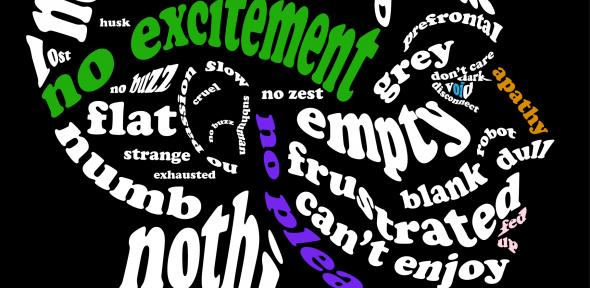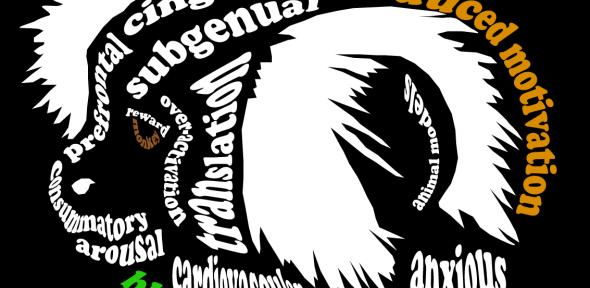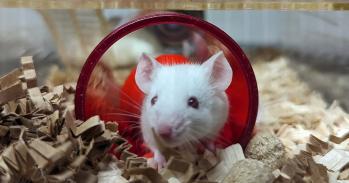
‘Anhedonia’ (the loss of pleasure) is one of the key symptoms of depression. An important component of this symptom is an inability to feel excitement in anticipation of events; however the brain mechanisms underlying this phenomenon are poorly understood.
‘Anhedonia’ (the loss of pleasure) is one of the key symptoms of depression. An important component of this symptom is an inability to feel excitement in anticipation of events; however the brain mechanisms underlying this phenomenon are poorly understood.
Understanding the brain circuits that underlie specific aspects of anhedonia is of major importance, not only because anhedonia is a core feature of depression but also because it is one of the most treatment-resistant symptoms
Laith Alexander
Now, in a study involving marmosets, scientists at the University of Cambridge have identified the region of the brain that contributes to this phenomenon, and shown that the experimental antidepressant ketamine acts on this region, helping explain why this drug may prove effective at treating anhedonia.
Depression is a common and debilitating condition which is recognised as a leading cause of disability worldwide. A survey published in 2016 found that 3.3 out of every 100 UK adults had experienced depression in the week before being interviewed.
A key symptom of depression is anhedonia, typically defined as the loss of ability to experience pleasure. However, anhedonia also involves a lack of motivation and lack of excitement in anticipation of events. All these aspects have proven difficult to treat. One major issue slowing down progress in developing new treatments is that the brain mechanisms that give rise to anhedonia remain largely unknown.
“Imaging studies of depressed patients have given us a clue about some of the brain regions that may be involved in anhedonia, but we still don't know which of these regions is causally responsible,” says Professor Angela Roberts from the Department of Physiology, Development and Neuroscience at the University of Cambridge.
“A second important issue is that anhedonia is multi-faceted – it goes beyond a loss of pleasure and can involve a lack of anticipation and motivation, and it’s possible that these different aspects may have distinct underlying causes.”
In fact, even when existing therapies do work, the reasons why they are effective are not always clear, making it difficult to target these therapies to individuals.
Using marmosets, a type of non-human primate, Professor Roberts and MBPhD student Laith Alexander, along with other colleagues, including those at the Wolfson Brain Imaging Centre and Translational Neuroimaging Laboratory, have shown how over-activity in a specific area of the brain’s frontal lobe blunts the excitement seen when anticipating a reward and the motivation to work for that reward. Their results are published today in the journal Neuron.
In the present study marmosets were trained to respond to two sounds: if they heard sound A, they would receive a treat of marshmallows; if they heard sound B, they would not receive a treat. Once they had learned the association, they would become aroused at sound A, reflected in an increase in blood pressure and excited movements of the head. They would not show the same response to B.
The researchers then infused either a drug or a saline solution into a region of the brain known as ‘area 25’ through thin cannulae (metal tubes) in the marmosets’ head. Cannulae are inserted during a single surgical procedure, and once the anaesthetic has worn off they do not trouble the animals.
The effect of the drug was to temporarily make this particular brain region over-active, and this resulted in the marmosets showing less excitement and anticipation at the prospect of a marshmallow treat. They were however as quick to eat the marshmallow treat as before. The saline infusion made no difference to the activity in area 25 or to the marmosets’ excitement and anticipation.
In a second task, the marmosets had to make more and more responses to get their reward – while initially they would receive a marshmallow treat after pressing a coloured shape on a touch sensitive computer screen just once, as the task proceeded, they would be required to press the coloured shape an increasing number of times. Eventually, the marmoset would reach a point where it gave up, considering the treat to be no longer worth the effort required.
When the marmosets’ area 25 was over-activated, the researchers observed that the marmosets gave up much faster. This lack of motivation is another key symptom associated with anhedonia.
By using PET scanning techniques to observe activity across the marmoset’s brain the researchers found that over-activity in area 25 had a knock-on effect to other brain regions, which also became more active, indicating that these were all part of brain circuity controlling anticipatory excitement.
Finally, the researchers investigated the effect of the experimental antidepressant, ketamine. Marmosets were given the antidepressant 24 hours ahead of the experiment. This time, even when marmosets were administered the treatment to make area 25 over-active, they still showed excitement and anticipation at the marshmallow reward. PET scanning revealed that the brain circuits were functioning normally. In other words, ketamine had blocked the effects of over-activating area 25, which would otherwise blunt anticipation.
“Understanding the brain circuits that underlie specific aspects of anhedonia is of major importance, not only because anhedonia is a core feature of depression but also because it is one of the most treatment-resistant symptoms,” says Laith Alexander, the study’s first author.
“By revealing the specific symptoms and brain circuits that are sensitive to antidepressants like ketamine, this study moves us one step closer to understanding how and why patients may benefit from different treatments.”
Marmosets are used to study brain disorders such as depression because of the similarity of the frontal lobes to those of humans. Rats, which are often used in psychology studies, have frontal lobes quite different to those of humans, making it less easy to translate studies of frontal lobe circuitry directly into the clinic.
“Depression affects many millions of people worldwide, so it’s important we get to the problems within the brain that underlie the various symptoms,” says Professor Roberts. “Studying these symptoms in non-human primates, such as marmosets can help bridge the gap between findings from rodent studies and the clinic.
“Using marmosets, we are able to manipulate the activity in specific brain regions, helping us see which regions are causally involved. These effects are temporary, and wear off after a short time.”
The research was funded by Wellcome.
Reference
Alexander, L, et al. Fractionating blunted reward processing characteristic of anhedonia by over-activating primate subgenual anterior cingulate cortex. Neuron; 4 Dec 2018; DOI: 10.1016/j.neuron.2018.11.021

The text in this work is licensed under a Creative Commons Attribution 4.0 International License. Images, including our videos, are Copyright ©University of Cambridge and licensors/contributors as identified. All rights reserved. We make our image and video content available in a number of ways – as here, on our main website under its Terms and conditions, and on a range of channels including social media that permit your use and sharing of our content under their respective Terms.






